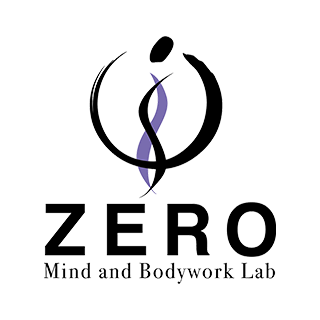Introduction
Hello, I’m Hidefumi Otsuka, offering Rolfing sessions in Shibuya, Tokyo.

How Can We Support the Process of Human Transformation?
— Insights from Rolfing and Coaching
At first glance, Rolfing and coaching may seem like completely different disciplines. The former works with the body, while the latter works through language. However, at their core lies a shared inquiry:
“How can we support the process of human transformation?”
I studied Co-Active Coaching by CTI (The Coaches Training Institute) in 2009. As I deepened my exploration of coaching, I encountered Rolfing. Though seemingly different, both methods are deeply engaged with the same essential theme: transformation.
In this series, I’ll explore the relationship between Rolfing and coaching from the following seven perspectives:
- Part 1: Neutrality and Presence
- Part 2: The Four Cornerstones
- Part 3: The Three Principles and the Rolfing Ten Series
- Part 4: Supporting the Process Between Sessions
- Part 5: Quality of Relationship (Designed Alliance / Right Relationship)
- Part 6: Skill Comparison (CTI’s 5 Coaching Skills and Rolfing Techniques)
- Part 7: Summary and Integration
Through this series, I want to explore the multifaceted theme of “transformation” from various angles—touch, inquiry, listening, and being. By comparing Rolfing, which engages through the body, with coaching, which works through language, I believe we can gain new insights into what it means for humans to transform.
In this first part, I’ll focus on two central modes of being shared by both approaches: Neutrality and Presence.
Neutrality: From Doing to Being
Changing the field by “being together”
Neutrality in CTI Coaching: “Being With”
In Co-Active Coaching: 4th Edition, the foundational stance of the coach is described as follows:
“Co-Active coaching is not about fixing people. It is about being with them in their full humanity.”
— Co-Active Coaching, p. 8
The coach is not there to offer solutions but to stay present in the client’s process. For example, in a session with a newly promoted executive experiencing confusion, he confided that he had been assigned a project he didn’t really want to take on. Rather than offer advice, the coach simply asked, “How are you feeling right now, sharing this with me?”
After a pause, the client quietly said, “Maybe I’ve been turning away from what truly matters to me.”
There was no attempt to “fix.” Rather, through a state of “being with,” the client arrived at a deeper realization.
Neutrality in Rolfing: Letting Go of fixing clients
JJeff Maitland, in his book Embodied Being: The Philosophy and Practice of Manual Therapy (2017), defines the necessary state for a practitioner to truly be present in a healing space:
“Neutral is a receptive, non-manipulative state of awareness that does not seek to impose, fix, or direct anything.”
— Embodied Being, p. 149
He further explains:
“To be neutral is not to be passive or detached. It is a deeply engaged way of being-with.”
— Embodied Being, p. 150
In practice, neutrality does not mean doing nothing. I recall a session with a client who had shallow breathing. I placed my hand gently on his chest, maintaining minimal pressure while simply “being with” him. Slowly, his breath began to shift and deepen. Later, he remarked, “It felt like space opened up deep inside my chest.”
This shift wasn’t caused by an intentional intervention—it resonated with the body’s own impulse to change. In Rolfing, neutrality doesn’t mean giving up intention but being deeply engaged while remaining open.
Neutrality — Similarities and Differences
| Perspective | CTI | Rolfing |
|---|---|---|
| Definition of Neutrality | Not fixing, “being with” | Non-manipulative resonance, deep engagement |
| Primary Means | Silence, inquiry, empathy | Space, posture, non-directive touch |
| What It Supports | The client’s creativity and potential | The body’s self-organization and expressive movement |
Neutrality is not about doing nothing—it is an active way of being open and present together.
Presence: The Deepest Way of Touching Is a Way of Being
Presence in CTI Coaching
Co-Active Coaching defines presence as follows:
“Presence is the source of intuition, creativity, and genuine connection.”
— Co-Active Coaching, p. 54
Presence, in CTI, means the coach is fully in the “here and now,” sensing the essence behind the client’s words. One client once told me, “I don’t even know what to talk about.” I just stayed quietly present. After a long silence, the client said, “Maybe I’ve been searching for my own voice in this silence.”
Presence is not just about “listening”—it’s about creating a space where something new can emerge.
Presence in Rolfing
Jeff MaitlJeff Maitland describes presence as the deepest form of technique a Rolfer can offer:
“The most profound transformations happen not from what we do with our hands but from the quality of our presence.”
— Embodied Being, p. 145
Presence is not a “technique” but a quality of awareness that shapes the entire field and enables change to arise. In one session, I felt subtle instability around a client’s pelvis. Rather than intervening, I simply touched and stayed present. The body began to reorganize on its own.
Presence — Similarities and Differences
| Perspective | CTI | Rolfing |
|---|---|---|
| Definition of Presence | Source of creativity, intuition, connection | Quality of being that transforms space |
| Means of Expression | Words, silence, inquiry | Touch, holding space, aligned posture and awareness |
| What It Brings | Insight and empowered choice | Self-organization, integration, free movement |
Presence is “the invisible force that determines what happens in the space.” For both coach and Rolfer, holding the field precedes technique.
Summary: Transformation Is Supported by Being, Not Doing
ロルフThough Rolfing and CTI Coaching use different mediums—body vs. language—they share a common philosophy:
- Support the transformation that wants to emerge, rather than causing it
- Trust in the client’s inner resources
| Axis of Comparison | CTI (Co-Active Coaching) | Rolfing |
|---|---|---|
| Neutrality | Not fixing, “being with” | Non-manipulative resonance, Right Relationship |
| Presence | Source of insight | Deepest force for change |
| Main Means | Dialogue, inquiry, silence | Touch, space, state of being |
| Core Insight | “Transformation begins with being together” | “When we stop trying to fix, change begins” |
Coming Up Next
In Part 2, we’ll explore the Four Cornerstones of CTI and compare them with the human view underlying Rolfing, examining what each modality presumes about the nature of human beings.
References
- Jeff Maitland (2017). Embodied Being: The Philosophy and Practice of Manual Therapy. North Atlantic Books.
- Henry Kimsey-House, Karen Kimsey-House, Phillip Sandahl, & Laura Whitworth (2018). Co-Active Coaching: The Proven Framework for Transformative Conversations at Work and in Life (4th ed.). Nicholas Brealey.
- Ida Rolf (1977). Rolfing: Reestablishing the Natural Alignment and Structural Integration of the Human Body for Vitality and Well-Being. Healing Arts Press.

